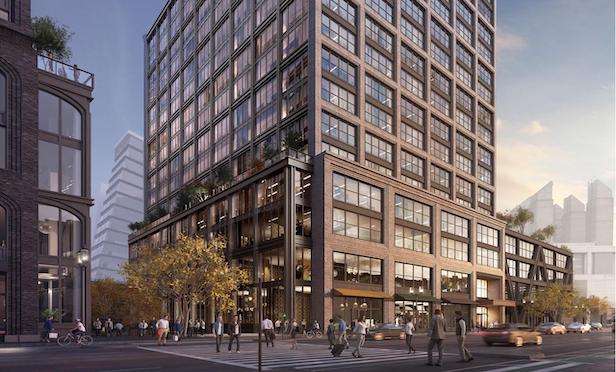 Biomedical firm Foundation Medicine signed a lease last August for 580,000 square feet and space at the 400 Summer St. building in the Seaport District. Photo Courtesy of WS Development.
Biomedical firm Foundation Medicine signed a lease last August for 580,000 square feet and space at the 400 Summer St. building in the Seaport District. Photo Courtesy of WS Development.
BOSTON—With a vacancy rate of 1.5% in Cambridge, new life science clusters in and around Greater Boston are now beginning to emerge.
CBRE in a recently released report notes that more than 500 life sciences and biotechnology companies are now based in Boston and Cambridge with more than 100 firms more in the suburbs.
The CBRE report states that life science companies occupy approximately 30 million square feet of lab space in Greater Boston with more than 4 million square feet of space in the development pipeline.
Future developments are underway in re-zoned stretches of West Cambridge, across the City of Boston, in the suburbs of Somerville and Watertown, and in the office parks of Waltham, Lexington, Wakefield, Bedford and Burlington.
"Kendall Square is at the epicenter of the explosion of genomics-based research in the life sciences industry and the repercussions are being felt in a significant way across Greater Boston," says Steve Purpura, vice chairman, leading CBRE's Life Sciences business. "While we expect continued growth in all submarkets, the Seaport District—now anchored by large, mature life science firms—is the fastest growing urban life science cluster in the country and is particularly well positioned for significant future growth."
Total life sciences employment in Suffolk, Middlesex and Norfolk counties has grown to nearly 90,000 jobs since 2001. The life sciences industry's annual growth rate from 2010 to the second quarter of 2019 averaged 4%, outpacing the overall private employment growth rate of 2%.
Harbingers for continued life science expansion include a continued flow of research capital coming to the region. Boston and the surrounding suburbs saw 22% uninterrupted growth in funding from the National Institutes of Health from 2015 to 2019. Cambridge's venture capital funding stream increased 471% from $595.2 million in 2010-2012 to $3.4 billion in 2017-2019.
With life sciences firmly rooted in the eastern Massachusetts economy, a $473-million renewal of the Massachusetts Life Sciences Initiative in 2018 is focused on workforce development, public school education, and encouraging geographic dispersion of life sciences activity to regions in central and western Massachusetts. An additional $150 million has been made available for tax credits tied to new hiring, the CBRE report states.
© Touchpoint Markets, All Rights Reserved. Request academic re-use from www.copyright.com. All other uses, submit a request to [email protected]. For more inforrmation visit Asset & Logo Licensing.







